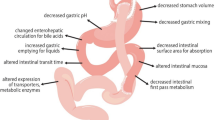Summary
The comparative pharmacokinetics of Aspegic, the lysine salt of acetylsalicylic acid, administered in multi doses either through i.v. or i.m. route was studied. 1 g of drug was injected each time with a frequency of 3 times a day. The pharmacokinetic parameters were determined using the experimental data in the literature. From these results, three categories of patients were considered, depending on their response to the drug. A numerical model was established in order to evaluate the following results: the drug level in the blood compartment obtained with the i.v. or i.m. administration, as well as the area under the curve for the first day and the third day when the so-called stationary state was obtained. Approximately similar values for AUC were obtained for each route of administration, for a given category of patients. The effect of the inter-variability of the patients characterised by their response to the drug was found to be of prime importance.
Similar content being viewed by others
References
Bannwarth B., Demotes-Mainard F., Schaeverke T., Labat L., Dehais J. (1995) Central analgesic effects of aspirin-like drugs. Fundam. Clin. Pharmacol., 9, 1–17.
Henry P., Hiesse-Prevost O., Dillenschneider A., Ganry H., Insuasty J. (1983): Efficacy and tolerance of effervescent aspirin-metoclopramide association in the treatment of migraine attack. La presse Medicale, 24, 254–258.
Castaneda-Hemandez G., Castillo-Mendez M.S., Lopez-Munoz F.J., Granados-Soto V., Flores-Murietta F.J. (1994): Potentiation by caffeine of the analgesic effect of aspirin in the pain-induced functional impaiment model in the rat. Can. J. Physiol. Pharmacol., 72, 1127–1131.
Forster C., Anton F., Reek P.W., Weber E., Handwerker H.O. (1988): Measurement of the analgesic effects of aspirin with a new experimental analgesimetric procedure. Pain, 32, 215–222.
Derumeaux G., Mouton-Schleifer D., Soyer R., Saoudi N. Cribier A., Letac B. (1995): High incidence of left atrial thrombus detected by transoesophageal endocardiography in heart transplant recipients. Eur. Heart. J., 16, 120–125.
Henneken C.H. (1990): Role of aspirin with thrombolytic therapy in acute myocardial infarction. Chest, 97, 1515–1555.
Rudra A. (1989): Injectable aspirin: attenuation of the cardiovascular response to tracheal intubation. Calcutta Med. J. 5, 39–42. antihypertensive effect of aspirin in rats. Br. J. Pharmacol., 94, 755-758.
Willerson J.T., Mueller S.D., Ferguson J.J. (1992): Should all patients with risk factors for ischemic heart disease receive aspirin. Texas Heart Inst. J., 19, 73–78.
Duc J., Pecoud A. (1988): About one case of respiratory arrest: aspirin and non steroidal anti-inflammatory drugs tolerance. Med. Hygiene, 46, 705–709.
De Gaetano G., Cerletti C. (1988): Prolonging of bleeding time by aspirin: a dual mechanism. Thrombosis Res., 50, 907–912.
Gay W.A.J.R. (1990): Aspirin, blood loss and transfusion. Ann. Thorac. Surg., 50, 345.
Van Gijn J. (1992): Aspirin: dose and indications in modern stroke preventions. Neurol. Clinics, 10, 193–207
Pappas J.M., Westengard J.C., Bull B.S. (1976): Population variability in the effect of aspirin on platelet function: implications for clinical trials and therapy. Arch. Pathol. Lab. Med., 118, 801–804.
Shah A., Lettieri J., Kaiser L., Echols R., Heller A.H. (1994): Comparative pharmacokinetics and safety of ciprofloxacin 400 mg i.v. thrice daily versus 750 mg p.o. twice daily. J. Antimicrob. Chemother., 33, 795–801.
Catchpole C., Andrews J.M., Woodcock J., Wise R. (1994): The comparative pharmacokinetics and tissue penetration of single-dose ciprofloxacin 400 mg. i.v. and 750 mg p.o.. J Antimicrob. Chemother., 33, 103–110.
Vergnaud J. M. (1993): Controlled Drug Release of oral Dosage Forms. E. Horwood, chapters 10–15.
Warembourg H., Delbecque H., Fruchart J.Ch. (1975): Dosage de la salicylèmie chez l’homme après administration d’acetylsalicylate de lysine par voie intraveineuse et par voie intramusculaire. Lille Med., 20, 923–927.
Warembourg H., Delbecque H., Ducloux G (1974): Appreciation des effets d’un sel injectable de l’acide acetylsalicyque chez des malades soumis à des traitements anticoagulants. Lille Med., 21, 632–638.
Vidal, Editions du Vidal, Paris (1994) Aspegic, 112.
Author information
Authors and Affiliations
Rights and permissions
About this article
Cite this article
Nia, B., Vergnaud, J.M. Comparative pharmacokinetics of Aspegic 1000 mg i.v. versus 1000 mg i.m. thrice daily. European Journal of Drug Metabolism and Pharmacokinetics 21, 333–338 (1996). https://doi.org/10.1007/BF03189735
Received:
Issue Date:
DOI: https://doi.org/10.1007/BF03189735




